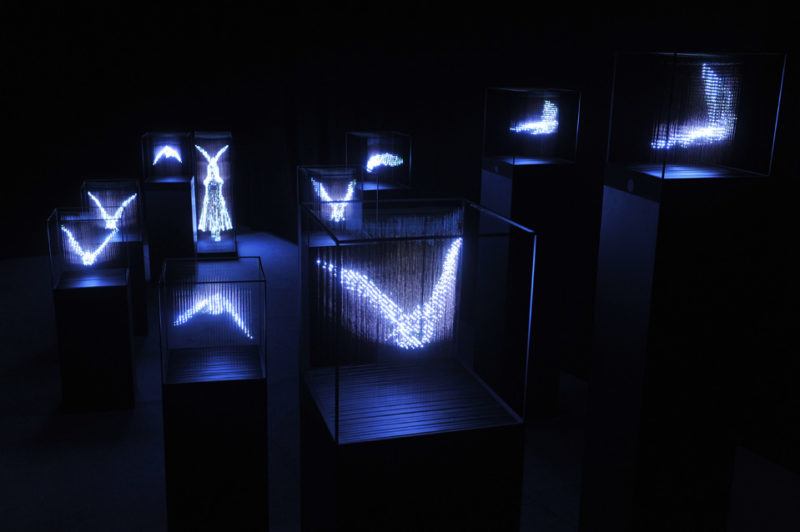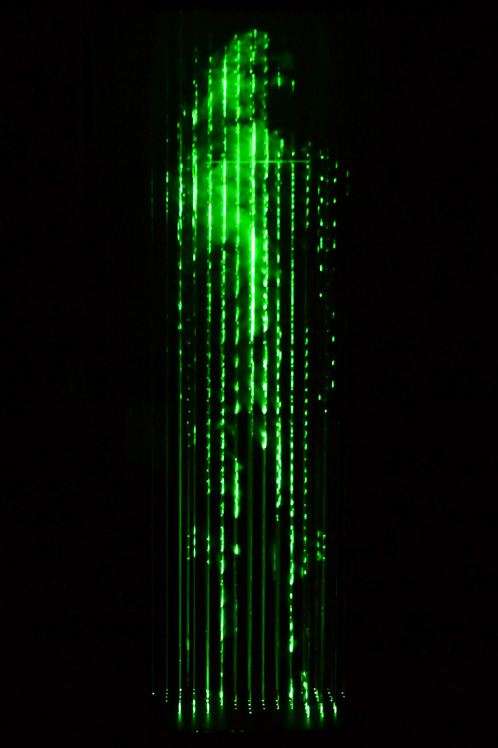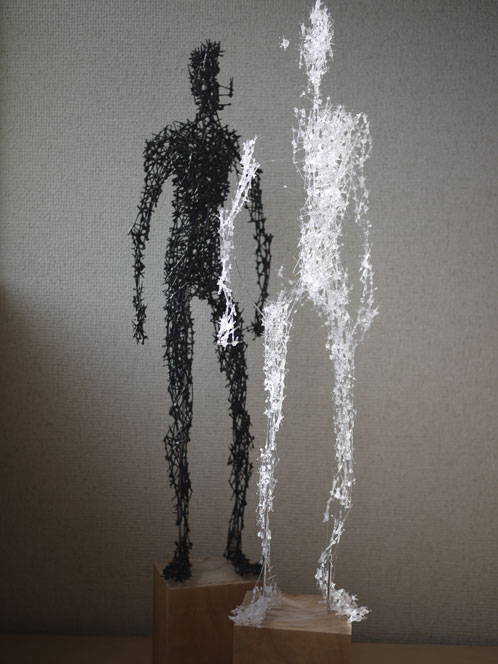For my project, I will be focusing on using glowing florescent yeast and strains to make light art. I have access to Professor Young’s stocks of glowing microbes, so I will be making art, in petri dishes, at Gateway.
Logistics
The microbes produce various strains of florescent proteins. These proteins need to first absorb light to gain the energy they need to emit light. For example, a green florescent protein, or GFP, needs to receive light at an approximately 383 nm wavelength, which is blue-ultraviolet light. In return, GFP will emit a strong green light, at about 509 nm. Because of this, I will need either the correct-colored LEDs, or white LEDs and the appropriate spectra filters to make my art visible.
I have a few ideas that I would like to try out to make light art:
Painting
This is the least intensive method for making light art:
- Culture the correct FP-coding cells
- Draw the image on a petri dish (under sterile hood)
- Wait (overnight) for the drawing to develop
I would like to see if I can make a time-lapse video of the microbe growth.
Here are some examples of microbe painting from Pinterest:


Photonegatives
This technique requires a little bit more of a setup from painting.
- Create an image in Photoshop
- Print image on transparent printing sheet
- Put image on the top of a cell culture dish
- Seed agar plate with cells
- Turn on UV radiation with the dish inside the hood.
- Leave cells for 1 hr +
- Remove and check the next day for the image
Result are visually stunning though! (This example is also from Pinterest):

I made a first-pass attempt at this kind of artwork using yeast cells in the lab last week- I definitely need to optimize the process.


I believe this happened because yeast cells are much more robust than the bacteria cells that other artists have used. I am going to try this method with bacteria if I can- they die much easier with UV exposure.
I am also going to buy a UV sterilizing light & expose the yeast to it overnight to see if that works…

3D Printing & Sculpture
If I have time, I would like to try to 3D print non-circular petri dishes to grow my cells in. In addition, I have an Idea to make a 3D petri dish lamp using an LED as a light source for the yeast grown in the petri dishes.

(Glowing cell culture disco ball???)
The lamp will be a small and roughly circular ball formed from petri dishes attached together. In the middle will be a blue LED; this LED will be the proper wavelength to make the yeast in the ptri dishes glow green. As a result, the lamp will appear dimly yellow from the agar, with glowing green patches where the yeast are, and the natural blue from the LED will shine through the gaps in-between the petri dishes.
Please feel free to reach out to me if you have any suggestions or other ideas!
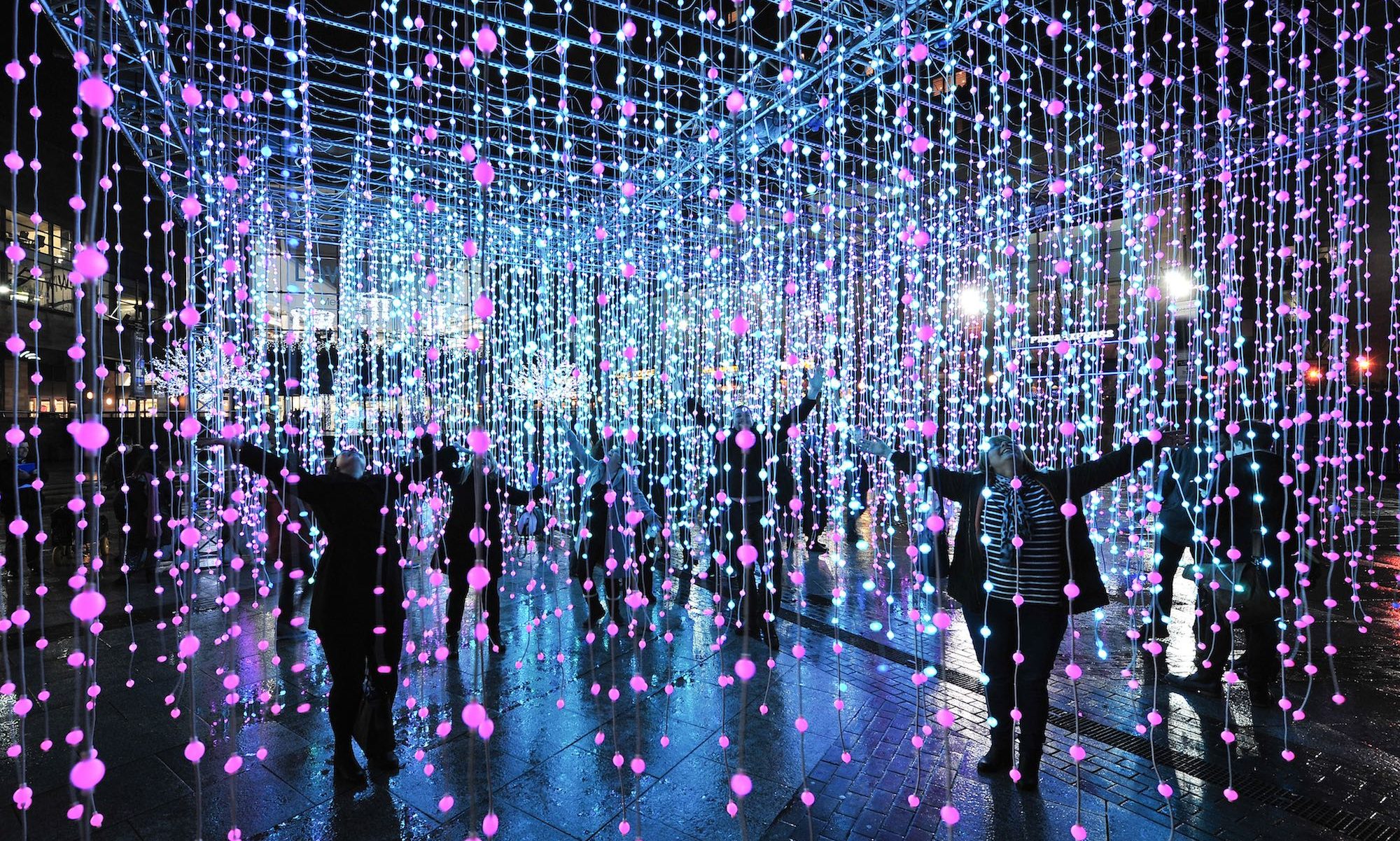
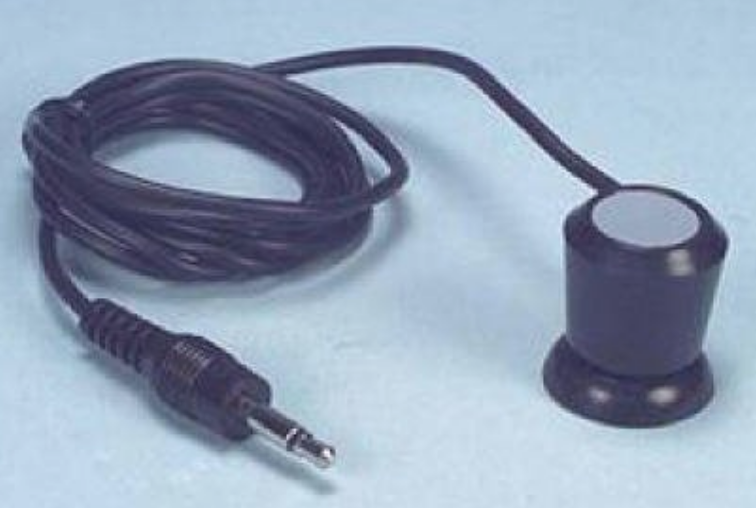

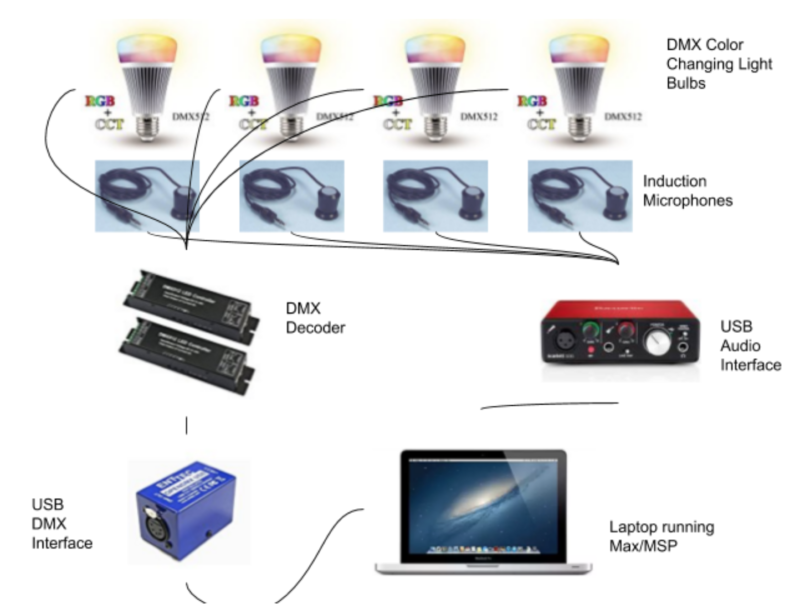



 Jen Lewin is an internationally renowned light and interactive sculptor. She works in New York City, and over the past 15 years has created works of art that have been featured at many events, solo exhibitions, and publications.
Jen Lewin is an internationally renowned light and interactive sculptor. She works in New York City, and over the past 15 years has created works of art that have been featured at many events, solo exhibitions, and publications.













 Sidewalk Harp plays by passing your body through the 36 sensors capped with LEDs along the bottom of the 40 foot long form.
Sidewalk Harp plays by passing your body through the 36 sensors capped with LEDs along the bottom of the 40 foot long form.























